Paintings .com
Collection
on Google Maps
| Phone, voicemail and text 707-875-2911 | Now at the Gallery | About Us Linda and Dan | ||||||
| Linda Sorensen Paintings .com |
Joshua Meador Collection |
view us on Google Maps |
||||||
 |
|
Historic California Painters, The Joshua Meador Collection, and paintings by Bodega Bay artist Linda Sorensen |
|
| Thursdays through Sundays, Noon until 5:00 pm (other times by appointment) BodegaBayHeritageGallery.com art@BodegaBayHeritageGallery.com |
1580 Eastshore Road (next to Terrapin Creek Cafe) call or text 707-875-2911 View us on Google Maps |
Bodega Bay Heritage Gallery Newsletter, March 2025 |
||
now available at the gallery Hay Barn, Pierce Point Pt. Reyes National Seashore by Linda Sorensen |
|
Now at the gallery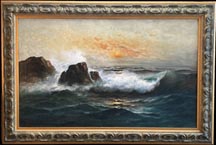 Nels Hagerup 1864-1922 Sunset Beach, San Francisco oil on canvas, 21 1/2 x 29 1/2 |
 |
|
| In 2011, San Francisco's de Young Museum hosted an extraordinary exhibition, The Birth of Impressionism: Masterpieces from the Musée d'Orsay, Paris |
|
We have long told our clients at Bodega Bay Heritage Gallery that when you purchase a historic painting, you don't just "own" it, you also assume a responsibility. |
|
 |
|
|
|
|
|
|
|
 John Buchanan Jr. 1953-2011 Fine Arts Museums of San Francisco Director, 2006-2011 |
|
|
 Photo portraits of the Parisian Impressionists |
 Jules Lefebvre 1836-1911, In Search of Truth 1870 Musée d'Orsay, Paris |
|
 William Adolphe Bouguereau 1825-1905 , The Birth of Venus 1879 Musée d'Orsay, Paris |
|
|
|
 James McNeill Whistler 1834-1903, Arrangement in Grey and Black No. 1 (Portrait of the Artist's Mother) 1871 Musée d'Orsay, Paris |
|
|
|
 Jules Bastien-Lepage 1848-1884, Hay Making, (first exhibited at the Salon of 1878), Musée d'Orsay, Paris |
|
|
|
 Frèdèric Bazille 1841-1870, Bazille's Studio 1870, Musée d'Orsay, Paris |
|
Frèdèric Bazille was born to a wealthy wine merchant family near Montpellier in the South of France. He moved to Paris in 1862 to study medicine and met Pierre-Auguste Renoir and Alfred Sisley and became interested in painting. In short order, his study of medicine was forgotten and he was painting full time. His circle of artistic friends grew to include Claude Monet and Édouard Manet. As the wealthiest member of the group, he soon was providing studio space and art materials for his friends. |
|
 Frèdèric Bazille 1841-1870, Family Reunion 1867, Musée d'Orsay, Paris |
|
Family Reunion 1867 is a group portrait of Bazille's family near Montpellier in the summer of 1867. His parents are prominently seated to the left. The light blue dresses with navy blue dots were in fashion in 1867. Family Reunion was accepted to the Salon of 1867 over Claude Monet's more daring compositions. After the painting was completed, Bazille added his own image, standing behind his parents. The illuminated background and the dappled sunlight beneath the tree show's Bazille's appreciation for the natural light of the South of France. |
|
|
 Frèdèric Bazille 1841-1870, Portrait of Pierre-Auguste Renoir 1867 Musée d'Orsay, Paris |
Portrait of Pierre-Auguste Renoir In this portrait, Bazille paints Renoir in a rather odd posture. But then again a pose such as this fits a young man in his late 20's. This group of painters was young, confident, daring, energetic and stylish. Renoir is elegantly dressed with a dark jacket and light trousers. |
|
Portrait of Frèdèric Bazille by Pierre-Auguste Renoir shows Bazille at age 25 busy at his easel. To Bazille's right is hanging a snow scene by Claude Monet. This portrait holds special significance because, in light of his death, it preserves for us the image of a gifted young artist with a great future. One can't help but wonder what his artistic career would have lead to had he survived the war. |
|
|
|
Although Edgar Degas exhibited with the Impressionists, he never really considered himself to be one of them. He rejected being called an Impressionist, preferring to be called a Realist. Although he did not get along well with Claude Monet, he was a close friend with Édouard Manet and Mary Cassatt. Degas did not have a high regard for plein air painters. He once said, "You know what I think of people who work out in the open. If I were the government I would have a special brigade of gendarmes to keep an eye on artists who paint landscapes from nature. Oh, I don't mean to kill anyone; just a little dose of bird-shot now and then as a warning." |
|
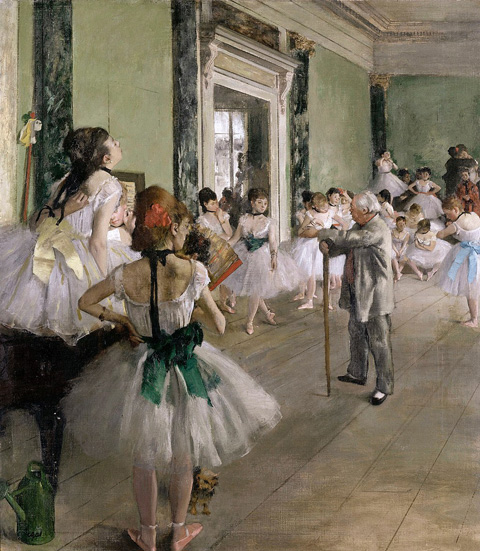 Edgar Degas 1873-76 The Class of Dance 1878, Musée d'Orsay, Paris |
 Edgar Degas 1834-1917 At the Stock Exchange 1878, Musée d'Orsay, Paris |
Degas was a fan of the ballet, not only attending performances but also visiting backstage and the dancer's studios. He loved painting dancers at work in rehearsal, exploring them in variations of posture and gesture. In The Class of Dance, he captures a moment near the end of rehearsal when the dancers were exhausted, stretching, twisting their backs, adjusting their hair or a ribbon. They seem to not pay much attention to their inflexible teacher, Jules Perrot, a real life master. |
|
|
 Éduard Manet 1832-1883, The Fifer 1866 Musée d'Orsay, Paris |
 Claude Monet 1840-1926, The Magpie 1868-69, Musée d'Orsay, Paris |
|
|
 Claude Monet 1840-1926, Rue Montogueil 1878, Musée d'Orsay, Paris |
 Claude Monet 1840-1926, The Turkeys 1876, Musée d'Orsay, Paris |
The Turkeys was a scene Monet came upon while at the Chateau de Rottembourge (11 miles SE of Paris). He had been commissioned to create some large canvases for the walls of the Chateau. Instead of making the Chateau the subject of this painting, Monet focused on this "rafter" of turkeys grazing on a summer day. This is not among Monet's most famous works, but it is a crowd pleaser at the Musée d'Orsay. |
|
|
 Claude Monet 1840-1926, The Gare Saint-Lazare Station 1877, Musée d'Orsay, Paris |
|
The Gare Saint-Lazare Station is one of 12 paintings Monet produced depicting the now famous train station. The station was the first major train depot built in Paris in 1837 serving the western suburbs and beyond to the coast of Normandy. Monet rode this train many times, to his childhood home in Le Havre near the coast and to his home in Giverny. His paintings of Saint-Lazare Station are known for Monet's treatment of their smoky interiors. He exhibited seven of this series at the Third Impressionist Exhibition in 1877. Today, these paintings are in the collections of museums worldwide, including Harvard University's Fogg Museum, the Art Institute of Chicago and the National Gallery in London. |
|
 Pierre-Auguste Renoir 1841-1919, The Swing 1876, Musée d'Orsay, Paris |
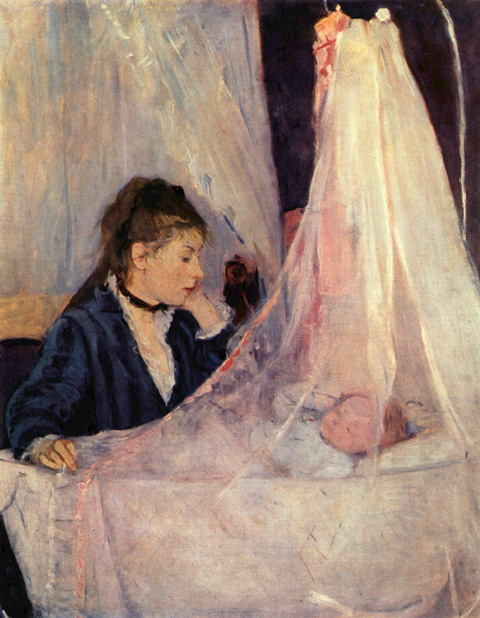 Berthe Morisot 1941-1895, The Cradle 1972, Musée d'Orsay, Paris |
|
|
 Gustave Caillebotte 1848-1894, The Floor Scrapers (The Planers) 1886, Musée d'Orsay, Paris |
|
Gustave Caillebotte (pronounced "K-Bot") was both a member of the Impressionists and one of their first patrons. As a painter, his work was more realistic than others in the Impressionist group. He was born to an upper class Parisian family. He earned a law degree in 1868 and was also trained as an engineer. In 1870-71, he was drafted into the French Army and fought in the Franco-Prussian war. One of his most famous paintings is Paris Street, Rainy Day which is in the collection of the Art Institute of Chicago. |
|
 James Tissot 1836-1902, The Dreamer (Summer Evening) 1871, Musée d'Orsay, Paris |
|
James Tissot is best known for his paintings of fashionable women in social settings during the Belle Époque of Paris and of high society women in Victorian England. At the age of 34 in 1870, he fought in the Franco-Prussian War. A year later in 1871, he moved to London and began a relationship with his model, an Irish woman, Kathleen Newton, whom he lived with until her death in 1882. |
|
| Previous Newsletter Articles about Claude Monet, Pierre Auguste Renoir and James Tissot | |||
March 2019 Claude Monet Still Matters, Two Major Western U.S. Exhibitions |
December 2019 Claude Monet: The Nature of Truth Denver Art Museum |
October 2024 Renoir paintings in Paris at the Musée de l'Orangerie |
November 2019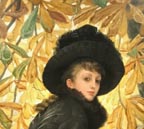 James Tissot: Fashion and Faith at SF's Legion of Honor |
| Back to the Top | |||
| Gallery news |  Linda and Dan |
|
| ... in and around Bodega Bay | ||
 |
Bodega Bay Heritage Gallery 1580 Eastshore Road Between the Terrapin Creek Cafe and Roadhouse Coffee open Thurs-Sun, Noon 'till 5 -- other times by chance or appointment an exceptional collection of late 19th and early 20th century paintings by well known California artists http://www.BodegaBayHeritageGallery.com | Call or Text 707-875-2911 email: Art@BodegaBayHeritageGallery.com |
 "Mendocino Coast" Joshua Meador |
 Ren Brown |
The Ren Brown Collection Just steps away from Bodega Bay Heritage Gallery A sumptuous gallery experience ... Contemporary Japanese Prints, Handmade Ceramics & Jewelry, Japanese Antiques, California Artists & Sculptors 1781 Coast Highway One, Bodega Bay, 94923 |
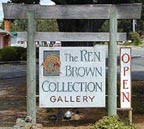 |
Linda Sorensen Paintings Linda paints colorful and imaginative / transcendental-influenced |
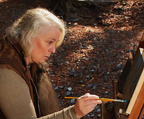 |
|
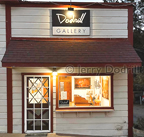 |
In the nearby town of Bodega ... Dodrill Gallery 17175 Bodega Highway, Bodega CA 94922 Famed photographer, world adventurer and rock climber Jerry Dodrill exhibits and sells and his exceptional landscape photographs ... https://jerrydodrill.photoshelter.com/p/page2 | 707-377-4732 Photo@JerryDodrill.com| Back to the Top |
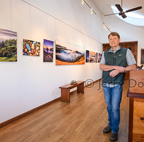 |
 |
In the nearby town of Bodega ... Artisans' Co-op featuring the talents of local artists ... photography, paintings, textiles, jewelry, ceramic and wood art 17175 Bodega Highway, Bodega CA 94922 ... http://www.artisansco-op.com| 707-876-9830 Back to the Top |
|
 |
Bodega Gallery in the historic town of Bodega We are located in the town's original blacksmith shop from the 1850's and it has been an art gallery since the 1960's. We showcase jewelry, toys, paintings, kinetic art, and decorative and functional ceramics. https://bodegaartgallery.com | 415-515-4665 |
 |
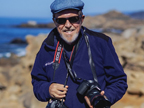 |
Bodega Bay's John Hershey Photography Bodega Bay resident photographer John Hershey displays his scenic shoreline and sea life images locally in restaurants, visitor venues and art shows. His 50 year career has encompassed multimedia production, commercial and personal photography, environmental portraiture, and community photojournalism. John recently added interpretive infrared photography to his portfolio. John Hershey Photography Portfolio ... http://www.jhersheyphoto.com John Hershey Photography Sales ... https://j-hershey-media.square.site |
 |
\ |
Bodega Bay's Jean Warren Watercolors Bodega Bay resident Jean Warren says her paintings are reflections of the places she has lived and traveled. Jean is a Signature member of the National Watercolor Society, California Watercolor Association and full member of Society of Layerists in Multi-Media. http://www.JeanWarren.com / 707-875-9240 |
|
| What's nearby in Sonoma County? |
||
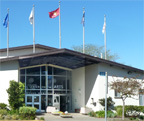 |
IN SEBASTOPOL - Sebastopol Center for the Arts |
|
 Corrick's Keven Brown |
IN SANTA ROSA Corrick's Art Trails Gallery | http://www.corricks.com/arttrailsgallery 637 Fourth Street, Santa Rosa, CA 95401 | Contact:: http://www.corricks.com/contact-us Corrick's has been a Santa Rosa Treasure since 1915, a downtown stationery store serving as the community's "cultural hub." Corrick's has long supported local artists with its impressive "ART TRAILS GALLERY," including paintings by Linda Sorensen. Corricks offers a number of originals by famed Santa Rosa artist, Maurice Lapp ... (see our August 2017 article) located on Fourth Street, steps away from Santa Rosa's revitalized town square and Fourth Street's Russian River Brewery |
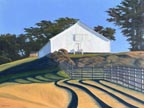 Linda Sorensen's White Barn circa 1880, Sea Ranch currently available at |
 Dennis Calabi |
IN SANTA ROSA- Calabi Gallery | http://www.calabigallery.com 456 Tenth Street, Santa Rosa, CA 95401 | email: info@calabigallery.com | 707-781-7070 Famed master conservator Dennis Calabi brings his rare knowledge and experience to present a tasteful and eclectic array of primarily 20th century artwork. http://www.calabigallery.com | Back to the Top |
 Easton, Crustacean Dancing Dream, American Alabaster |
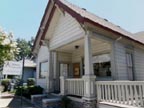 |
IN Santa Rosa - The Annex Galleries specializing in 19th, 20th, and 21st century American and European fine prints The Annex Galleries is a member of the International Fine Print Dealers Association (IFPDA). http://www.AnnexGalleries.com | Back to the Top |
|
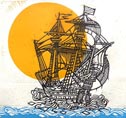 |
IN GRATON - Graton Gallery |
|
 |
IN DUNCANS MILLS - Christopher Queen Galleries 3 miles east of Hwy 1 on Hwy 116 on the Russian River http://www.christopherqueengallery.com |707-865-1318| Back to the Top |
|
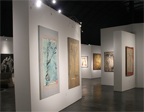 |
IN Healdsburg - Paul Mahder Gallery http://www.paulmahdergallery.com (707) 473-9150 | Info@paulmahdergallery.com 222 Healdsburg Avenue, Healdsburg, CA 95448 | check for hours |
|
 |
|
 |
| Links to current museum exhibits relevant to Early California Art | |||
| The Greater Bay Area | |||
| The Walt Disney Family Museum -- see website for details This museum tells Walt's story from the early days. (on the Parade Grounds) 104 Montgomery Street, The Presidio of San Francisco, CA 94129 -- view location on Google Maps -- |
 |
San Francisco ... see website de Young Museum Permanent Collection |
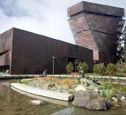 |
| San Francisco closed, see website California Historical Society |
 |
San Francisco Legion of Honor ... see website -Permanent European and Impressionist Paintings |
 |
| San Francisco open, see website for details Contemporary Jewish Museum |
 |
Oakland ... see website Oakland Museum of California -- ongoing Gallery of California Art -showcasing over 800 works from the OMCA's collection |
 |
San Francisco |
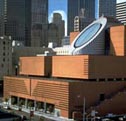 |
Santa Rosa |
 |
| Santa Rosa ... see website Charles M. Schultz Museum |
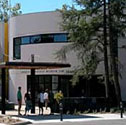 |
Moraga |
 |
| Sonoma Mission San Francisco de Solano Museum featuring the famed watercolor paintings of the California Missions by Christian Jorgensen |
 |
Sonoma Sonoma Valley Museum of Art ... see website 551 Broadway, Sonoma CA (707) 939-7862 |
 |
| Ukiah Grace Hudson Museum ... see website http://www.gracehudsonmuseum.org |
 |
Bolinas |
 |
| Walnut Creek ... see website The Bedford Gallery, Lesher Center for the Arts |
 |
San Jose San Jose Museum of Art ... see website approximately 2,000 20th & 21st century artworks including paintings, sculpture, new media, photography, drawings, prints, and artist books. |
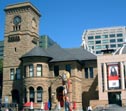 |
| Monterey Monterey Museum of Art ... see website Ongoing exhibitions ... Museums Permanent Collection including William Ritschel, Armin Hansen and E. Charlton Fortune http://www.montereyart.org |
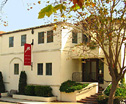 |
Palo Alto ... see website Cantor Art Center at Stanford University |
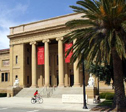 |
Monterey |
 |
Sacramento Crocker Art Museum ... see websites |
 |
| Sacramento Capitol Museum ... see website Governor's Portrait Gallery Permanent Exhibits (including one of our galllery's favorite artists, Robert Rishell's portrait of Gov. Ronald Reagan |
 |
Stockton's Treasure! The Haggin Museum ... see website -Largest exhibition of Albert Bierstadt paintings anywhere, plus the works of Joseph Christian Leyendecker, Norman Rockwell's mentor. see our Newsletter article, April 2011 |
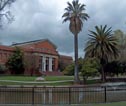 |
| Southern California (and Arizona) (for all museums below, see websites for hours and protocols. | |||
| Los Angeles Los Angeles Museum of Art Art of the Americas, Level 3: Artworks of paintings and sculptures from the colonial period to World War II— a survey of of art and culture & "Levitated Mass" |
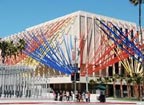 |
Irvine UCI IMCA (University of California, Irvine Institute and Museum of California Art) (formerly The Irvine Museum) |
 |
| Santa Barbara The Santa Barbara Museum of Art |
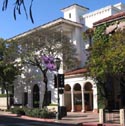 |
Orange Hilbert Museum, Chapman University |
 |
| San Diego San Diego Museum of Art Permanent Collection |
 |
Pasadena Norton Simon Museum -an Impressive Permanent collection, European impressionist and post impressionist paintings See our newsletter from March 2014 |
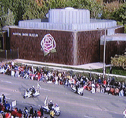 |
| Los Angeles California African American Art Museum adjacent to the LA Coliseum (see our newsletter articleof their Ernie Barnes Exhibition September 2019) |
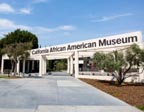 |
San Marino (near Pasadena) The Huntington Library American Art Collection Paintings by John Singer Sargent, Edward Hopper, Robert Henri, Albert Bierstadt, Thomas Moran, William Keith, Mary Cassatt, Thomas Hart Benton and many more. |
 |
| Phoenix, AZ Phoenix Art Museum an excellent sampling of Artists of the American West |
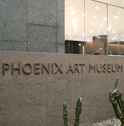 |
Palm Springs |
 |
| & Beyond | |||
| Honolulu, HI Honolulu Museum (see our Newsletter article from February, 2015) |
 |
Kamuela, HI (Big Island) Issacs Art Center 65-1268 Kawaihae Road Kamuela, HI 96743 (See our Dec '16 article "Hawaii's Paul Gauguin," modernist Madge Tennent, 1889-1972) |
 |
| Seattle, WA Seattle Art Museum ( see our article Mar 2018 French and American Paintings ) |
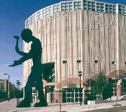 |
Portland, OR Portland Art Museum Permanent Collection: American Art |
 |
| Washington D.C. The Renwick Gallery Permanent ... Grand Salon Paintings from the Smithsonian American Art Museum |
 |
Chicago, IL Art Institute of Chicago Permanent collection: the Impressionists |
 |
| Cedar Rapids, IA The Cedar Rapids Museum of Art Grant Wood: In Focus is an ongoing permanent collection exhibition. |
 |
Bentonville, AR |
 |
| Washington D.C. The National Gallery Permanent collection American Paintings |
 |
Philadelphia , PA The Philadelphia Museum of Art |
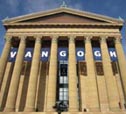 |
| Philadelphia , PA Barnes Foundation, Philadelphia Campus |
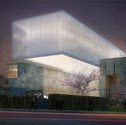 |
Brooklyn, NY The Brooklyn Museum American Art Permanent Collection |
 |
| New York , NY The Whitney Museum of American Art The largest selection of works by Edward Hopper |
 |
New York, NY Metropolitan Museum of Art Its extensive collection of American Art |
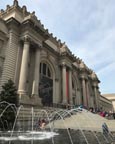 |
| Detroit, MI Detroit Institute of Arts American Art Permanent Collection |
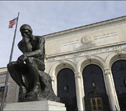 |
Ottawa, Ontario National Gallery of Canada |
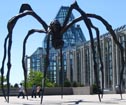 |
| Denver, CO Denver Art Museum |
 |
Boston, MA |
 |
| If you wish to sell a painting to us ... |
|